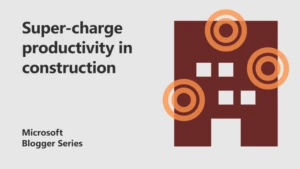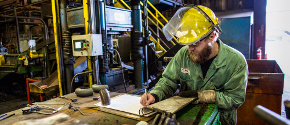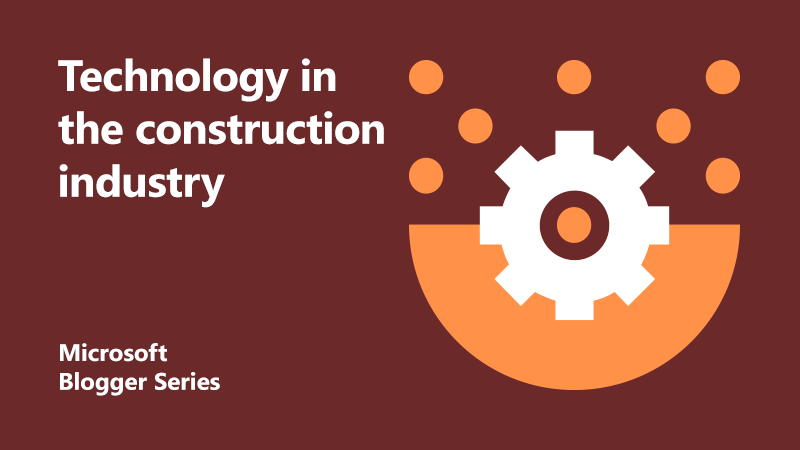
4 ways the construction industry can use technology to fix the supply chain and empower employees
When we think about a building, we consider all the stages of the process. From tendering, design, to construction, and the on-going management. However, in the built environment sector, these processes are all very siloed. There’s no digital feedback loop or common data environment across the supply chain.
At Microsoft we believe we can help empower the construction and built environment sector to fuel sustainable growth, fix the supply chain to increase employee productivity and deliver exceptional customer and social outcomes. To do this, organisations need to digitally transform with modern tools and solutions that bring AI, data, and analytics together to improve collaboration and productivity.
Ultimately our vision is to transform construction and built environment businesses with design innovation, a supply chain you can control, and a connected, safer, more productive workforce.
To help clarify our vision for the sector we have broken down where technology can play a key role in the built environment roadmap into four areas:

1. Intelligent Design
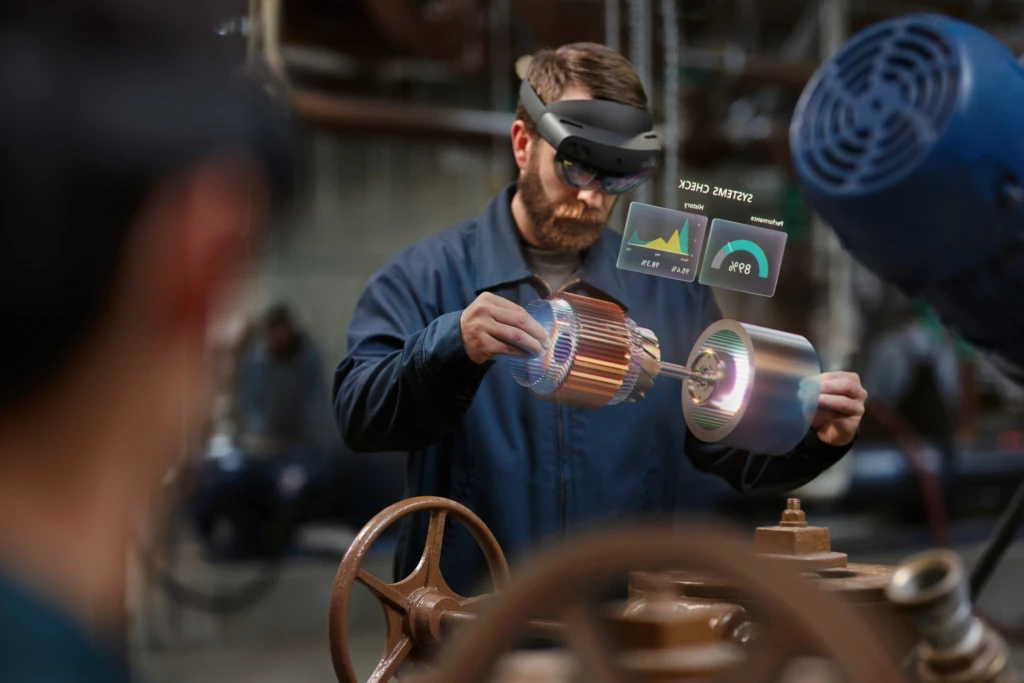 Technology can enable significant innovation within design processes. This is achieved by smart design automation via the cloud to enhance simulations and generate better quality data.
Technology can enable significant innovation within design processes. This is achieved by smart design automation via the cloud to enhance simulations and generate better quality data.
Using HoloLens mixed reality glasses with data, it can help boost innovation and sustainability. For example, HoloLens will make your building designs a reality by helping you view it in 4D. This enables teams to see how the building will look before it is even built, to help provide better collaboration and design.
We can even integrate HoloLens into Dynamics 365 to mobilise and increase collaboration across your workforce. Dynamics 365 Guides, provides employees with step-by-step instructions so they can learn by doing. You can even have remote assist, which provides instant collaboration.
Therefore organisations are able to bring ideas to life and create ground-breaking, sustainable designs swiftly and efficiently, powered by state-of-the-art mixed reality, AI, and the cloud.
2. Smart Lifecycle Management
The challenges within the sector can mainly be around project delays and budget challenges. These have significant impact on companies and the individuals that rely on the infrastructure.
Technology can help make risky tenders and project overruns a thing of the past with AI-fuelled analysis of past project data to predict future projects.
Furthermore, with Dynamics 365, you can connect sensors, networks, and ambient intelligence to create autonomous supply chains that predict and avoid project delays and amplify resources.
3. Intelligent Asset Management
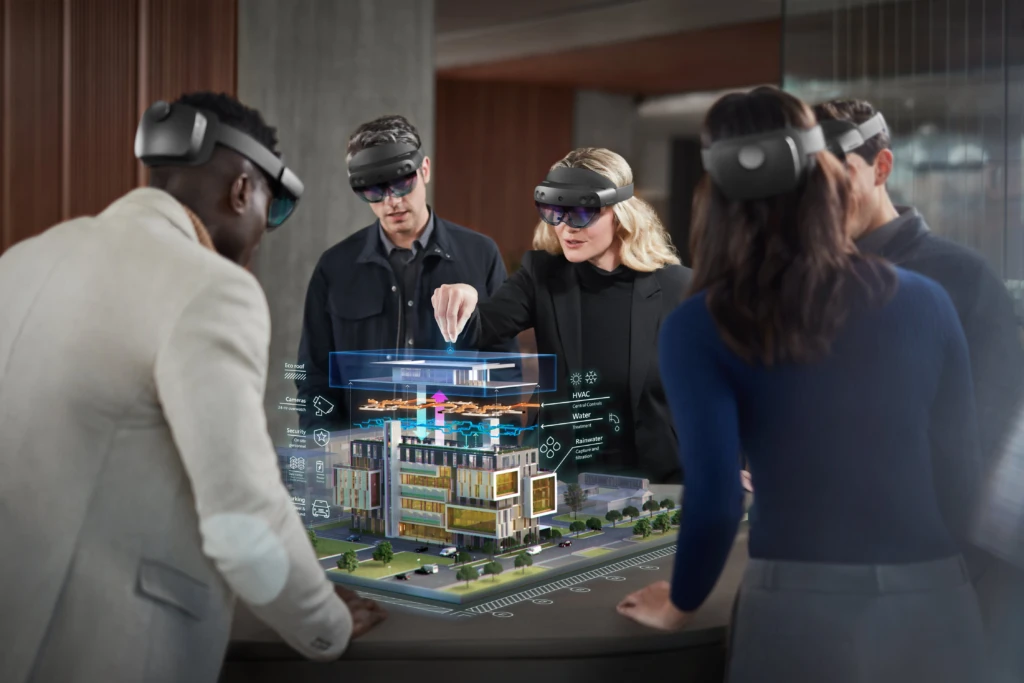 Internet of Things and Azure Digital Twins technologies are revolutionising the maintenance, facilities management, and the servicing of asset operations.
Internet of Things and Azure Digital Twins technologies are revolutionising the maintenance, facilities management, and the servicing of asset operations.
Firstly by managing and tracking maintenance and facilities in real-time, you can improve building efficiency, and automate tasks using device and sensor tracking. With Dynamics 365 this means better resource management allowing you to predict, detect, and solve issues before they happen.
Additionally companies can improve the management and efficiency of construction assets that help connect workers with the building. Non-operational assets, such as cranes, tools, and machines can also be monitored and managed through IoT and Azure Digital Twins.
This helps organisations discover ways to improve consumer experiences and spaces as well as create new efficiencies. By pairing the physical and digital world, you can analyse data and monitor systems to fix problems before they occur, prevent downtime, and even plan for the future using simulations.
4. Connected Sites and Workers
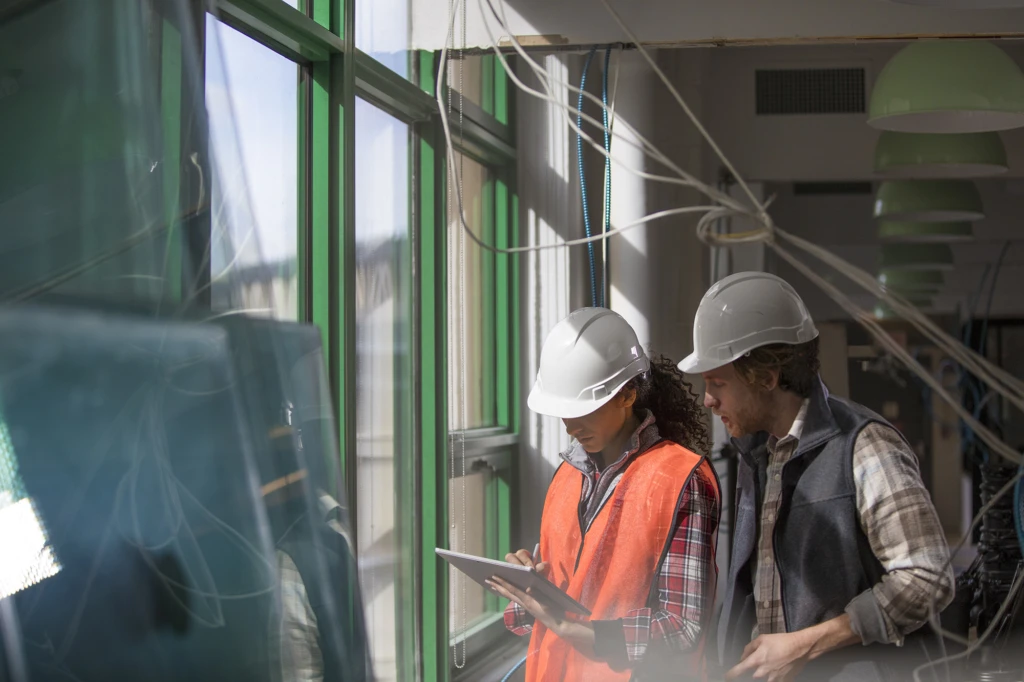 Health and safety and productivity are key priorities for the sector. We want to help organisations empower their workforce by protecting and connecting their people, projects, and properties.
Health and safety and productivity are key priorities for the sector. We want to help organisations empower their workforce by protecting and connecting their people, projects, and properties.
Companies can improve workplace safety for frontline workers when they combine mobile, wearable, and sensor technologies with visual recognition systems for real-time activity, safety, and personnel location tracking. The use of augmented reality for site surveying and drones to monitor dangerous areas of site can also be used to limit need for additional onsite staff.
With Dynamics 365, staff can manage and optimise projects in real time, with one consistent interface across all business functions. Technicians in the field can manage workloads easily as Dynamics brings all the relevant information together in one app. Using Remote Assist or the HoloLens, staff can easily build, repair, or consult specialist technicians in real-time.
Using a flexible device like the Surface also encourages staff to work the way they see fit. It brings together intuitive devices that are built with security by design with the apps and tools staff need to do their job. It’s even available with 4G connectivity for sites that are out of WiFi range.
Technology allows organisations to embrace safer, more collaborative, and productive working.
Help build a stronger future
We strongly believe there is a huge opportunity for technology to help transform the Built Environment Sector and build a better future for us all.
By using Dynamics 365 with the power of AI, mixed reality and advanced technology such as digital twins, you can enable your organisation to fuel future sustainable growth, fix supply chain, and site productivity. This will help you deliver exceptional workforce, customer, and social outcomes.
Find out more
Discover how Dynamics 365 can help you
Go to a Dynamics 365 training day
About the author
 Having worked at Microsoft for over 13 years I am energised by our culture, direction, and strategy as an organisation. I am passionate about the amazing opportunity this provides us to empower our customers to achieve their goals.
Having worked at Microsoft for over 13 years I am energised by our culture, direction, and strategy as an organisation. I am passionate about the amazing opportunity this provides us to empower our customers to achieve their goals.
I currently lead the Built Environment Team at Microsoft in the UK, where we enable the business outcomes of businesses in Design, Engineering, Construction, and Facilities Management Industries through digital technology. The Built Environment sector is particularly interesting area to focus as there is a huge opportunity for the industry to transform and it has an impact on all of us in our daily lives.

